Ten things you may not know about The Palio
If you’ve not yet joined one of our annual Palio tours in Siena every August your ideas about this horse race might be a little sketchy. As race day approaches (August 16) we thought you might like to discover more about one of Italy’s greatest spectacles!
1. It’s kind of a big deal
In fact it’s the biggest event in a Sienese year. Over 50,000 people attend Siena’s civic hub, Piazza del Campo, on race day to witness the spectacle.
2. It’s more than just a horse race
It’s the culmination of on-going rivalry and competition between Siena’s seventeen districts or ‘contrade.’ A palio can take many different forms but is generally a contest fought in traditional dress and can involve horse racing, archery and jousting amongst other activities. The Palio horse race in Siena is a particularly fierce competition with the sacred honour of a district riding on each race.
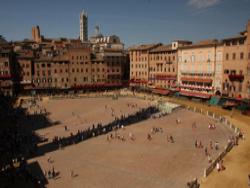
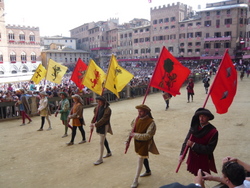
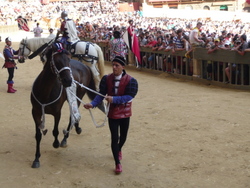
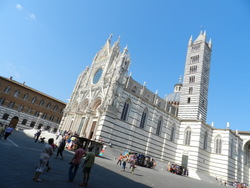
3. It only takes a minute
Well, just over a minute. On average the bareback horserace takes a thundering 60-90 seconds. It’s a white-knuckle display of brightly costumed racers riding full tilt through treacherous twists and turns and clinging on for dear life while roars of applause and cheers crescendo in the packed piazza.
4. Preparations take a year and the festivities last four days
The Palio race takes place twice a year, on 2nd July and 16th August, but it’s best to get there early to experience the 4-day build up to the event. Pre-Palio traditions include la tratta (the selection of the horses) and six horse trials that take place from the evening of la tratta day to the morning of Palio day. Each contrada also holds an open-air dinner in the streets on the evening before the race.
5. It’s seriously old
The competition dates back before the 17th Century and the race is held on a sand track in the centre of Siena’s UNESCO World Heritage-listed old town. Exploring the city on foot is one of the best ways to soak up the history and atmosphere.
6. It’s the horse that wins
The Palio is won by the horse who represents his contrada and not by the jockey. The winner is the first horse to cross the finish line with or without its rider (it’s not unusual to see a riderless horse finish the race). No pure bred horses are allowed and much emphasis is placed on the selection and blessing of the horses. The loser in the race is considered to be the contrada whose horse came second, not last.
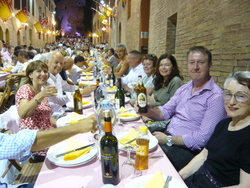
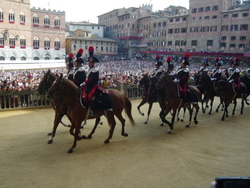
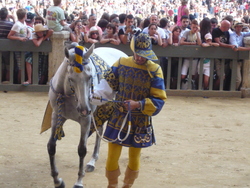
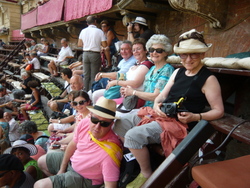
7. The aim is not just to win, but to prevent your enemies from winning
Part of the challenge is to prevent a rival contrada from winning and when a contrada fails to win its historical enemy will celebrate as merrily as if they were victorious. With Sienese pride at stake the competition is fierce and the atmosphere electric.
8. It’s as much about pageantry as horse racing
The race is preceded by a spectacular historical parade of traditionally dressed Sienese. The medieval display includes flag-wavers and a squad of sword-wielding Carabinieri. Jockeys also wear the bright colours of the contrada they represent. To really get into the spirit it’s fun to pick a contrada and cheer them on by waving the appropriately coloured scarf.
9. A little horse manure is a blessing
Each contrada brings its horse into its official chapel on race day for a special blessing to obtain divine favour. It’s considered good luck if the horse drops some manure in the church.
10. Grandstand tickets are like gold dust
Enthusiasts who wish to see the Palio from the comfort of a seat need to plan ahead or travel with an expert to ensure the best possible experience.
Our exclusive tour which follows this event, along with gentle walks in the Tuscan countryside, a cooking class of Tuscan classics and dinners in some of the city’s best restaurants runs each year from 12 – 18 August. We are already taking expressions of interest for 2015 and2016 so please get in touch if you are starting to make plans. It is a once-in-a-lifetime experience and truly unforgettable.
